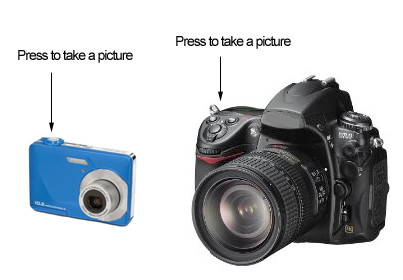How To Choose A Memory Card For Your Camera
-
\r\n It's important to use one of the recommended SD cards in your camera, or you may experience freeze-up or video corruption issues.We recommend only purchasing name brand SD cards through reputable resellers. There are both counterfeit and underperforming SD cards out in the marketplace, which can prevent proper functioning of your HD HERO camera's features. \r\n
\r\n\r\n SD, SDHC, SDXC and all their micro equivalents - whether you buy them branded by Jessops, SanDisk, Kingston, Trascend, Fujifilm, Lexar, Samsung; they’re all basically the same, right? Wrong, but you knew that. What you might not have been so clear about is just what the differences are. Why do some of them cost you an arm and a leg while others you can pick up for a couple of quid and, more importantly, which are the ones you should be using in your camera, phone or camcorder and what will the right choice do for your photography.\r\n
\r\n\r\n
\r\n \r\n
\r\n\r\n
\r\n
\r\n\r\n SD/SDHC/SDXC?
\r\n
\r\n
\r\nThe short answer here is not to worry. Whether there are any letters or not after “SD” and what those letters are does mean something, but it doesn’t really make any difference. In real terms, it relates to the capacity of the card and also has a bearing on whether or not it’s compatible with your camera.
\r\nSD is the oldest of the three and can have a maximum capacity of 2GB, which is rather a pittance in this day and age. The only reason to buy one of these is if your camera is older than the SDHC technology which came in to increase maximum card storage up to 32GB. Check you camera manual or take a look online to find out, but we’re willing to bet that your device is quite happy with SDHC.
\r\nWhere you might meet problems is with the SDXC format, introduced in 2009. That pushed the memory card boundaries up to 2TB, although you won’t find/be able to afford many at the top level.
\r\nThe bottom line here is not to worry about which type of card you go for unless it’s SDXC. That’s the one you might want to check to see if your device supports, but do buy it if you can.\r\n\r\n
\r\n
\r\n\r\n SD card Class and write speed
\r\n
\r\n
\r\nThis is probably the most important and least well understood part of the SD card mystery. The Class of your card matters. The reason you’ll find memory cards of the same capacity at vastly different prices is that one will be a lot faster at writing image and video files than the other, and that’s something that can make a big difference. Why? Because your camera might well be trying to deliver them faster than your SD card can scribble them down.
\r\nWhether in some super-high-speed burst mode or shooting a stream of 1080p video, that’s a lot of data to get from lens to memory card in any one moment, and if the write speed of your SD choice is the weak link, then your device’s performance is going to degrade.
\r\nThis is where the Class system on these little, flat memory cards comes into play. With each rating (Class 2, 4, 6, 8 and 10) comes the guarantee of a minimum write speed. They are 2, 4, 6, 8, and 10MB/second as you might guess by their names, and the labelling on your card to look out for is one of these numbers surrounded by a C. The only other one you’ll find is if it’s a UHS-type card on which you might see UHS-1 written or a U with a 1 in it and, like Class 10, that offers minimum write speeds of 10MB/second.\r\n\r\n
\r\n
\r\n\r\n Which make of SD card?
\r\n
\r\nThe chances are that your SD card will actually perform much better on average than the advertised minimum write speeds. Indeed, the manufacturer might well put the maximum or average write speed on the card label itself. While it’s best to stick to the more conservative estimate, it’s here where the brand of memory card comes into play and you might find you get better results with the SanDisks, Kingstons and Panasonics of this world.
\r\n
\r\nIn short...
\r\n
\r\nCheck that your device is compatible with the card you’re about to buy
\r\nGo for Class 10 or UHS-1
\r\nChoose a solid brand
\r\n
\r\nTips
\r\n
\r\nAll SanDisk SD and microSD memory cards are water-proof, temperature-proof, shock-proof, and x-ray-proof.
\r\nMost Point and Shoot cameras will work best with the Standard blue line or the SanDisk Ultra versions of SanDisk SDHC memory cards
\r\nMost DSLR cameras will work best with the SanDisk Extreme and the SanDisk Extreme Pro varieties of SDHC/SDXC memory card.\r\n
- PREV:How to Choose the Right Paint Color for Your Home
- NEXT:How To Choose The Right Eye Shadow Color
Related Articles
